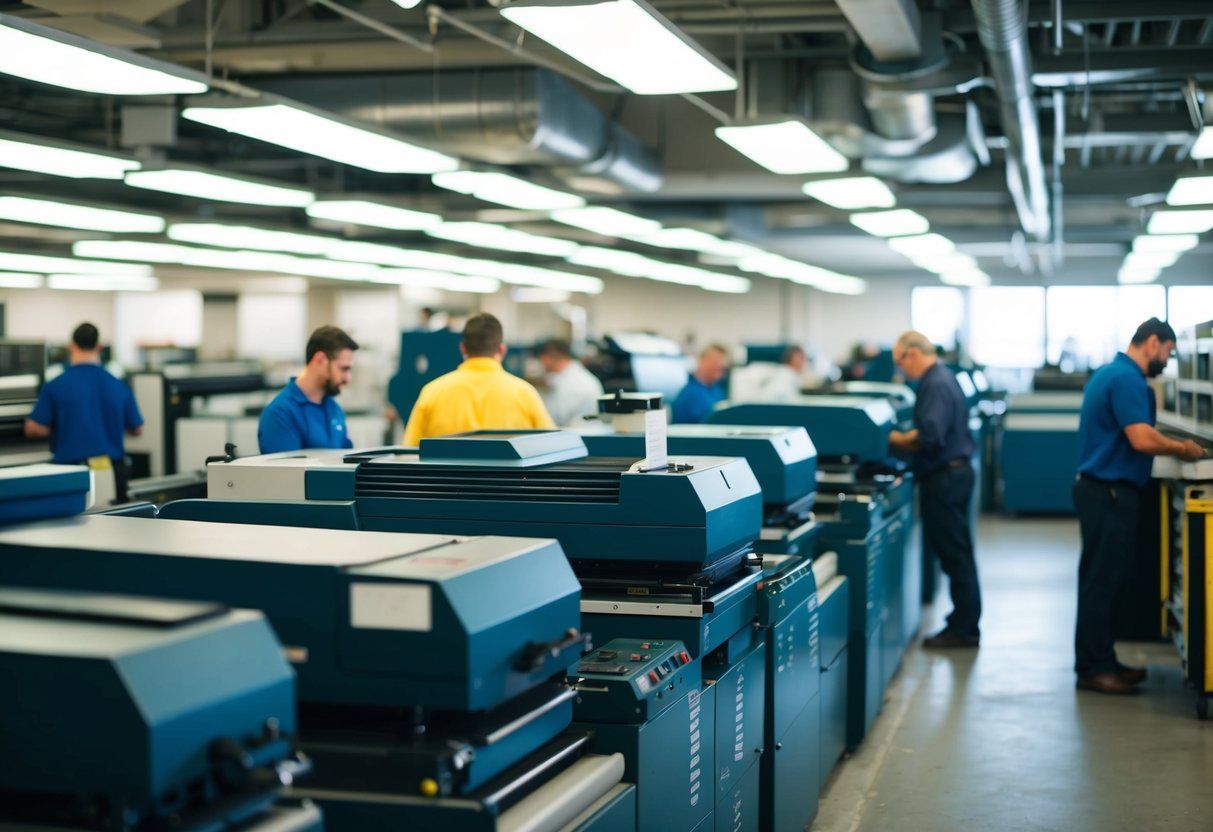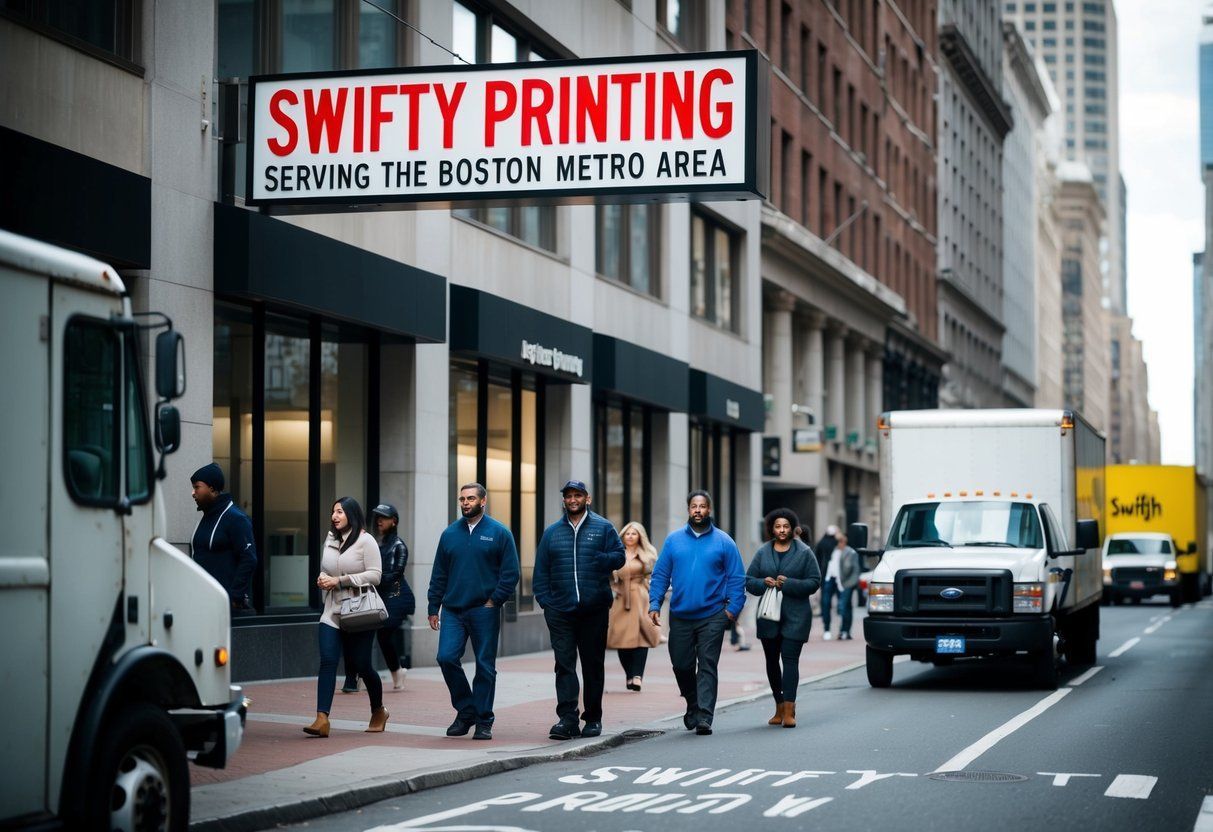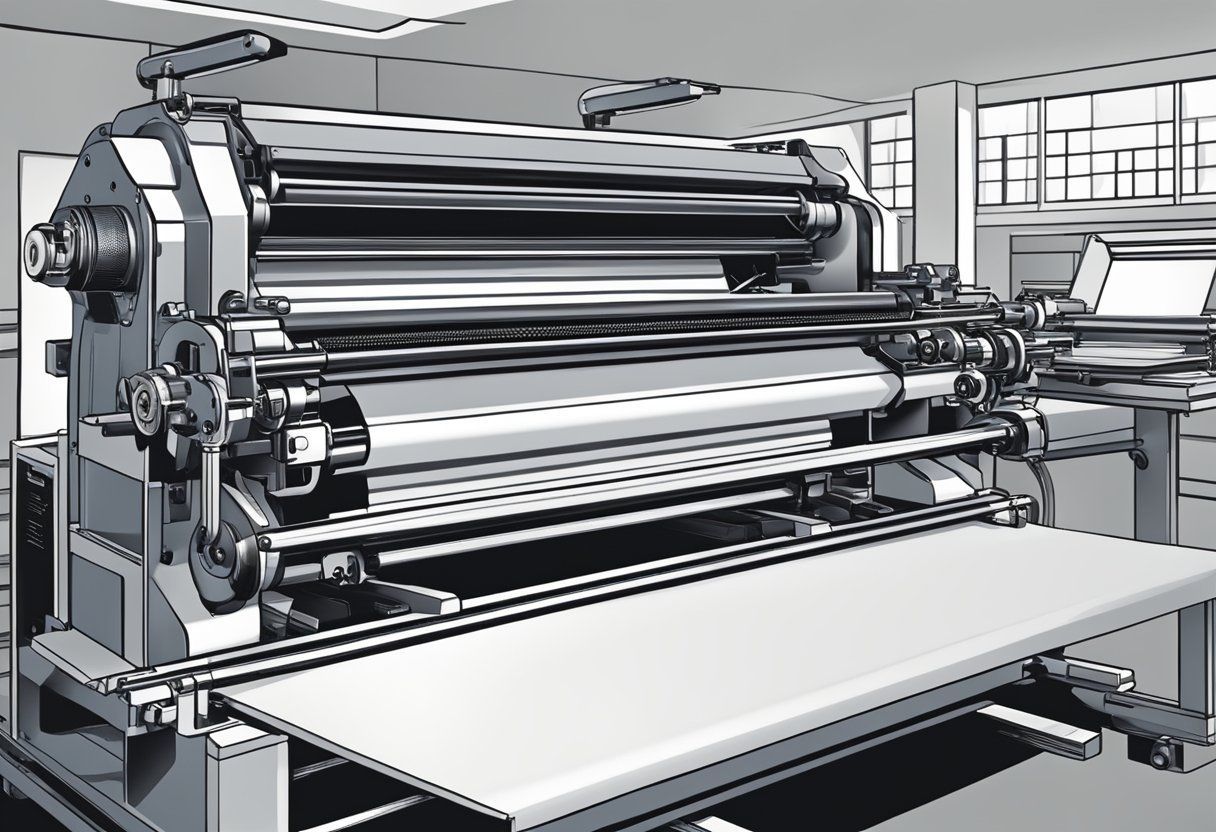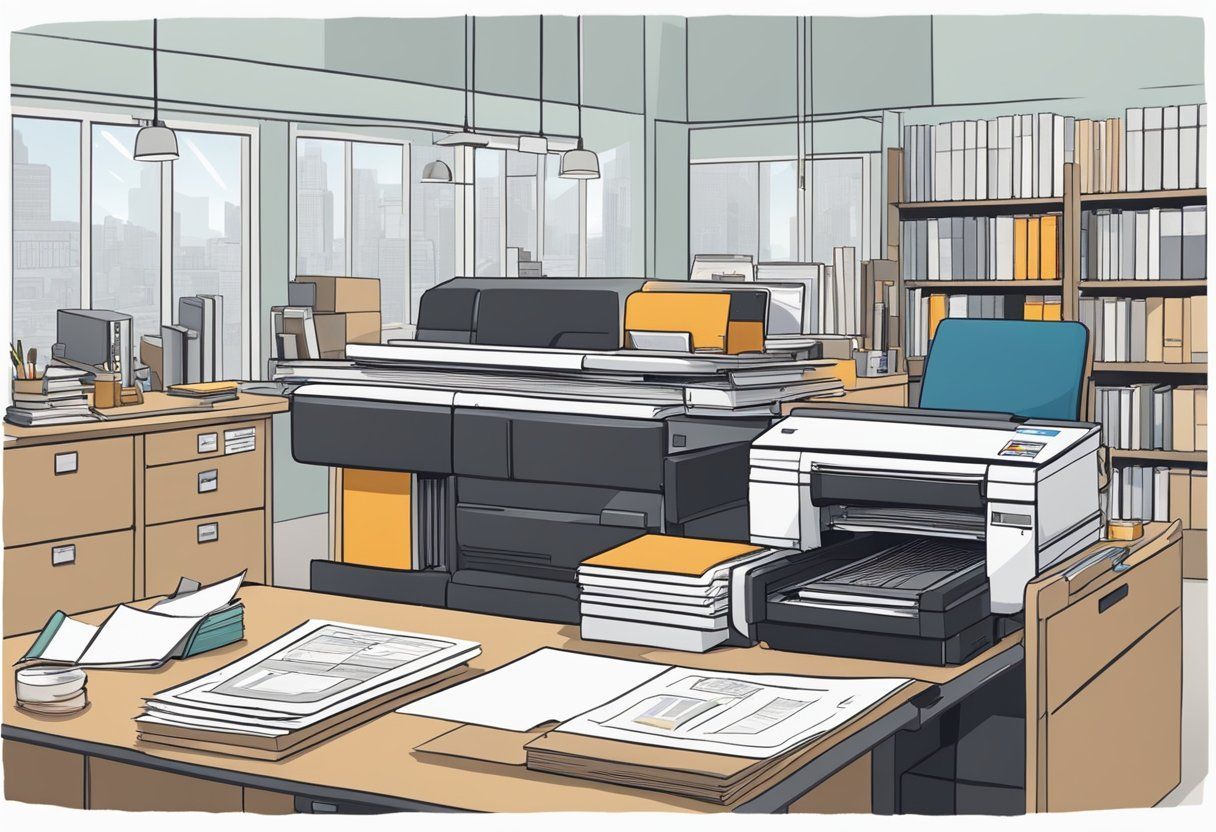Maximizing Your Print Budget: Cost-Effective Strategies
Maximizing your print budget is essential for businesses of all sizes, as printing costs can quickly add up and impact the bottom line. However, with the right strategies and planning, it is possible to reduce printing expenses without sacrificing quality or efficiency. This article will explore various cost-effective strategies that businesses can implement to optimize their print budget.

Understanding your print budget is the first step towards maximizing it. This involves analyzing your printing needs, identifying areas where costs can be reduced, and setting a realistic budget. Strategic planning is also crucial for cost-effectiveness, and businesses should consider factors such as design considerations, material and process choices, and effective print management.
By implementing eco-friendly printing practices, collaborating with vendors, and customizing printing solutions, businesses can further reduce costs while maintaining quality and efficiency. This article will provide practical tips for reducing printing costs, as well as addressing common questions and concerns regarding security and compliance in printing.
Key Takeaways
- Understanding your print budget and planning strategically is crucial for cost-effectiveness.
- Eco-friendly printing practices, collaboration, and customization can help reduce printing costs.
- Practical tips and considerations for effective print management can further optimize your print budget.
Understanding Your Print Budget
Assessing Printing Needs
Before allocating resources to printing, it is important to assess the printing needs of the organization. This involves identifying the types of documents that need to be printed, the frequency of printing, and the quantity of prints required. By understanding printing needs, organizations can avoid overprinting and reduce printing costs.
Tracking Printing Expenses
Tracking printing expenses is essential to understanding the organization’s printing budget. This involves monitoring the cost of paper, ink, and other printing supplies, as well as the cost of maintenance and repair of printing equipment. By tracking expenses, organizations can identify areas where costs can be reduced and make informed decisions about future printing expenditures.
Allocating Resources Wisely
Allocating resources wisely involves balancing the printing needs of the organization with the available budget. This includes prioritizing printing projects based on importance and urgency, as well as exploring cost-effective printing options such as duplex printing and using recycled paper. By allocating resources wisely, organizations can maximize their print budget and improve printing efficiency.
In conclusion, understanding your print budget is crucial to maximizing your organization’s printing efficiency and reducing printing costs. By assessing printing needs, tracking printing expenses, and allocating resources wisely, organizations can make informed decisions about their printing expenditures and achieve cost-effective printing strategies.
Strategic Planning for Cost-Effectiveness
Setting Clear Objectives
Before embarking on any print marketing campaign, it is crucial to set clear objectives. This will help in determining the target audience, the message to be conveyed, and the desired outcome. Objectives should be specific, measurable, attainable, relevant, and time-bound. By setting clear objectives, it is easier to evaluate the effectiveness of the campaign and make necessary adjustments.
Targeting the Right Audience
The success of a print marketing campaign largely depends on reaching the right audience. It is important to identify the target audience based on factors such as demographics, psychographics, and behavior. This will help in tailoring the message to resonate with the audience and increase the likelihood of a positive response. Additionally, targeting the right audience can help in minimizing the marketing budget and maximizing the return on investment (ROI).
Evaluating Print Marketing Impact
To determine the impact of a print marketing campaign, it is important to evaluate its effectiveness. This can be done by analyzing metrics such as response rates, conversion rates, and sales. By evaluating the impact, it is easier to determine the ROI and make necessary adjustments for future campaigns.
In conclusion, strategic planning is crucial for maximizing the effectiveness of print marketing campaigns while minimizing the marketing budget. By setting clear objectives, targeting the right audience, and evaluating the impact, it is possible to achieve optimal results and maximize the ROI.
Design Considerations for Budget Printing
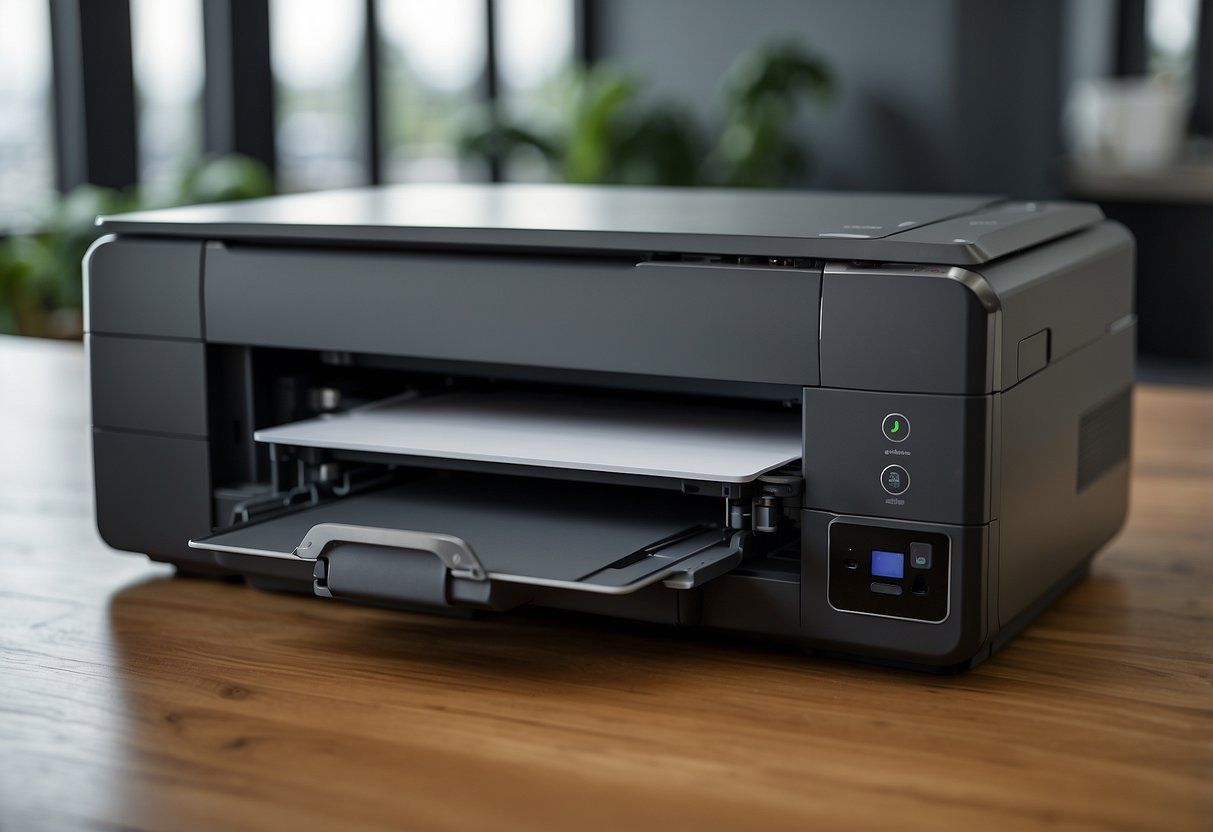
Choosing the Right Design
When it comes to designing for budget printing, it’s important to keep in mind that simple designs are often more cost-effective than complex ones. This is because complex designs require more ink, time, and effort to print, which can quickly drive up costs. Therefore, it’s recommended to choose a design that is clean, minimalistic, and straightforward.
Optimizing Templates for Cost Savings
Using pre-made templates can be a great way to save time and money on design work. However, it’s important to optimize these templates for cost savings. This can be done by reducing the number of colors used in the design, simplifying the layout, and using standard paper sizes. By doing so, you can ensure that your templates are both cost-effective and high-quality.
Balancing Quality and Cost
While it’s important to keep costs low, it’s also important to maintain a certain level of quality in your print materials. To achieve this balance, it’s recommended to use high-quality paper and ink, as well as to work with a reputable printing company. Additionally, you can consider using alternative printing methods, such as digital printing, which can be more cost-effective than traditional methods while still producing high-quality results.
By considering these design considerations for budget printing, you can maximize your print budget while still achieving high-quality results.
Material and Process Choices

Selecting Appropriate Paper Stock
Choosing the right paper stock is crucial to maximizing your print budget. The type of paper you choose can affect the quality of the print, the durability of the final product, and the overall cost. When selecting paper stock, it is important to consider factors such as weight, texture, and finish.
For example, if you are printing a brochure that will be handed out at a trade show, you may want to consider a heavier weight paper with a glossy finish to make it stand out and feel more substantial. On the other hand, if you are printing a newsletter that will be mailed out to customers, you may want to choose a lighter weight paper with a matte finish to keep the cost of postage down.
Utilizing Digital Printing Technologies
Digital printing has revolutionized the printing industry by allowing for shorter print runs and faster turnaround times. This technology is especially cost-effective for small businesses or organizations that only need a few hundred copies of a document.
By using digital printing, you can save money on setup costs and reduce waste by only printing the exact number of copies you need. Additionally, digital printing allows for greater flexibility in terms of customization and personalization, which can help you create more targeted and effective marketing materials.
Considering Finishes and Color Usage
Finishes and color usage can greatly impact the cost and effectiveness of your printed materials. When selecting finishes, it is important to consider factors such as durability, texture, and appearance. For example, a high-gloss finish may look great on a brochure, but it may not be practical for a document that will be frequently handled or stored.
When it comes to color usage, it is important to consider the use of spot colors versus process colors. Spot colors are pre-mixed inks that are applied to the paper separately, while process colors are created by mixing four primary colors (cyan, magenta, yellow, and black) together. Using spot colors can be more expensive, but it can also result in more accurate and consistent color reproduction.
By carefully considering material and process choices, you can maximize your print budget while still creating high-quality and effective marketing materials.
Effective Print Management
Implementing Print Management Software
Print management software can help organizations streamline their printing processes, reduce waste, and save money on their print budget. By implementing print management software, companies can gain visibility into their print environment, track usage, and set print policies to optimize their printing workflows.
Some of the benefits of print management software include reducing the number of unnecessary print jobs, controlling access to printers, and setting print quotas for users. This can lead to significant cost savings and improved efficiency in the workplace.
Adopting Managed Print Services
Managed print services (MPS) can help organizations optimize their print environment and reduce costs. MPS providers can assess a company’s printing needs, optimize their print infrastructure, and manage their printing workflows.
MPS can also provide ongoing support and maintenance, as well as help organizations track their print usage and costs. By adopting MPS, companies can reduce their print-related expenses, improve their printing workflows, and increase their overall productivity.
Monitoring and Adjusting Print Workflows
Effective print management involves monitoring and adjusting print workflows to optimize efficiency and reduce waste. By regularly analyzing print usage and identifying areas for improvement, organizations can reduce their printing costs and improve their overall productivity.
One way to monitor print workflows is to track usage patterns and identify areas where printing can be reduced or eliminated. For example, organizations can encourage employees to print double-sided to reduce paper usage, or limit color printing to only essential documents.
Another way to optimize print workflows is to regularly assess the print infrastructure and identify areas for improvement. For example, organizations can consolidate printers to reduce the number of devices and simplify maintenance, or upgrade to more energy-efficient printers to reduce energy costs.
By implementing effective print management strategies, organizations can reduce their print-related expenses, improve their printing workflows, and increase their overall productivity.
Eco-Friendly Printing Practices

In today’s world, where environmental concerns are at an all-time high, it is important for businesses to adopt eco-friendly printing practices. By doing so, they not only reduce their carbon footprint but also save money in the long run. Here are some cost-effective strategies that businesses can implement to maximize their print budget while being environmentally conscious.
Promoting Duplex and Grayscale Printing
Duplex printing, also known as double-sided printing, is a simple yet effective way to reduce paper usage. By printing on both sides of the paper, businesses can cut their paper usage in half, thus reducing their overall printing costs. In addition, grayscale printing, which uses only black ink instead of color, can also significantly reduce ink usage and costs.
Using Recycled Paper and Eco-Friendly Inks
Using recycled paper is another great way to reduce the environmental impact of printing. Recycled paper is made from post-consumer waste, which means that it requires less energy and resources to produce than virgin paper. In addition, using eco-friendly inks, such as soy-based inks, can also reduce the environmental impact of printing. These inks are made from renewable resources and are biodegradable, making them a more sustainable option.
Implementing Sustainable Printing Policies
Implementing sustainable printing policies can also help businesses reduce their environmental impact. This can include measures such as using energy-efficient printers, turning off printers when not in use, and recycling ink cartridges. By adopting these policies, businesses can reduce their energy usage and waste, thus promoting a more sustainable printing environment.
In conclusion, by adopting eco-friendly printing practices, businesses can reduce their environmental impact while also saving money in the long run. By promoting duplex and grayscale printing, using recycled paper and eco-friendly inks, and implementing sustainable printing policies, businesses can maximize their print budget while being environmentally conscious.
Practical Tips to Reduce Printing Costs
Printing can be an expensive endeavor, but there are practical tips that can help you save money while still maintaining high-quality prints. Here are a few cost-effective strategies to consider:
Leveraging Economies of Scale
Printing in bulk can often lead to significant cost savings. By ordering larger quantities of prints, you can take advantage of economies of scale and reduce the cost per print. This is especially true for items that are frequently printed, such as business cards, brochures, and flyers.
To maximize the benefits of economies of scale, it’s important to plan ahead and order prints in advance. This can help you avoid rush fees and ensure that you have enough prints to last for an extended period of time.
Exploring Digital Alternatives
Digital alternatives can be a great way to reduce printing costs. For example, instead of printing out a document, consider sharing it electronically via email or a cloud-based storage platform. This can help save on paper, ink, and printing costs, while also making it easier to share and collaborate on documents.
Another digital alternative to consider is electronic signatures. Instead of printing out documents and physically signing them, electronic signatures can be used to sign documents digitally. This can help save on paper, ink, and printing costs, while also streamlining the signing process.
Encouraging Responsible Printing Habits
Encouraging responsible printing habits can also help reduce printing costs. This includes printing only what is necessary, using duplex printing to print on both sides of the paper, and using draft mode whenever possible to save on ink.
Additionally, it’s important to properly maintain your printer to ensure that it is running efficiently. This includes regularly cleaning the printer, replacing ink cartridges when necessary, and using high-quality paper to prevent paper jams.
By implementing these practical tips, you can reduce printing costs and improve printing efficiency without sacrificing quality.
Collaboration and Customization

Fostering Collaboration for Better Results
Collaboration is an essential aspect of maximizing your print budget. By collaborating with your print service provider, you can ensure that your print materials are cost-effective, impactful, and aligned with your marketing campaign goals. By working together, you can identify the most effective print solutions for your specific needs.
Effective collaboration requires clear communication, mutual understanding, and a willingness to work together towards a common goal. By establishing a collaborative relationship with your print service provider, you can ensure that your print materials are customized to meet your specific requirements. This approach can help you save money, streamline your print production process, and improve the overall quality of your print materials.
Customizing Print Solutions for Specific Needs
Customization is another essential aspect of maximizing your print budget. By customizing your print solutions, you can ensure that your print materials are tailored to your specific needs and goals. Customization can help you create more impactful business cards, flyers, postcards, and other print materials that resonate with your target audience.
Effective customization requires a deep understanding of your target audience, your marketing campaign goals, and your brand identity. By working closely with your print service provider, you can develop customized print solutions that are aligned with your specific needs. This approach can help you improve the effectiveness of your marketing campaigns, enhance your customer service experience, and maximize the impact of your print materials.
In conclusion, collaboration and customization are essential strategies for maximizing your print budget. By fostering collaboration and customizing your print solutions, you can create more impactful print materials that resonate with your target audience. This approach can help you save money, improve the effectiveness of your marketing campaigns, and enhance your overall customer service experience.
Security and Compliance in Printing
Ensuring Secure Printing
In today’s digital age, it’s important to ensure that your printing environment is secure. One of the most important ways to do this is by implementing user authentication. This ensures that only authorized personnel have access to sensitive documents. Additionally, secure printing can be implemented to ensure that documents are only printed when the user is physically present at the printer. This prevents unauthorized access to sensitive documents.
Another important aspect of ensuring secure printing is by implementing security measures for print devices. This includes regular updates to firmware and software, as well as physical security measures such as secure printing trays and locks. It’s also important to ensure that print devices are located in secure areas and are not easily accessible to unauthorized personnel.
Complying with Industry Regulations
Compliance with industry regulations is crucial for any organization that deals with sensitive information. In the printing industry, there are several regulations that must be adhered to. For example, the Health Insurance Portability and Accountability Act (HIPAA) requires that all printed documents containing patient information be kept secure and confidential.
Another important regulation is the Payment Card Industry Data Security Standard (PCI DSS), which requires that all printed documents containing credit card information be kept secure and confidential. Compliance with these regulations can be achieved through the implementation of secure printing and user authentication.
In conclusion, ensuring security and compliance in printing requires a combination of user authentication, secure printing, and compliance with industry regulations. By implementing these measures, organizations can protect sensitive information and ensure that they are in compliance with industry regulations.
Measuring Success and ROI

Tracking Response Rates and Feedback
To measure the success of a print campaign, tracking response rates and feedback is crucial. This can be done by including a call to action in the print material, such as a unique URL or phone number, and tracking the number of responses received.
Additionally, collecting feedback from customers can provide valuable insights into the impact of the print campaign. This can be done through surveys or by monitoring social media for mentions of the campaign.
Calculating Return on Investment
Calculating return on investment (ROI) is an important step in measuring the success of a print campaign. To calculate ROI, the total cost of the campaign must be compared to the revenue generated as a result of the campaign.
It is important to consider both the short-term and long-term impact of the campaign, as well as any additional costs or revenue generated beyond the initial campaign.
By tracking response rates and feedback and calculating ROI, businesses can ensure they are maximizing their print budget and achieving their desired results.
Frequently Asked Questions

What strategies can be employed to reduce paper usage in printing?
One of the most effective strategies to reduce paper usage is to print double-sided. This can cut paper usage by half, resulting in significant cost savings over time. Another strategy is to encourage employees to proofread documents carefully before printing to avoid unnecessary reprints. Additionally, businesses can consider implementing a paperless system by using digital tools for communication and documentation.
How can businesses choose the most cost-effective printers for their needs?
When choosing a printer, businesses should consider their printing needs, such as volume and quality requirements, and compare the costs of different printer models. They should also consider the cost of ink or toner cartridges and the availability of compatible third-party cartridges. Businesses can also consult with a printer specialist to get recommendations on the most cost-effective printers for their specific needs.
What are the best practices for maintaining printers to minimize expenses?
Regular maintenance of printers can help prevent breakdowns and prolong the lifespan of the device. This includes keeping the printer clean, replacing ink or toner cartridges when they are low, and performing software updates. Additionally, businesses can consider setting up a maintenance schedule or outsourcing printer maintenance to a professional service.
In what ways can print management software help in cutting down printing costs?
Print management software can help businesses track and monitor printing activities, identify areas of excess printing, and set printing quotas for employees. This can help reduce unnecessary printing, which can result in significant cost savings. Print management software can also help automate print-related tasks, such as ordering supplies and troubleshooting printer issues.
How can companies effectively negotiate with suppliers to get better deals on printing materials?
Companies can negotiate with suppliers by researching the market and comparing prices from different suppliers. They can also try to negotiate volume discounts or long-term contracts to secure better pricing. Additionally, businesses can consider working with a print management company that has established relationships with suppliers and can negotiate on their behalf.
What are the benefits of implementing a print-on-demand system to save on printing costs?
Print-on-demand systems allow businesses to print only what they need, reducing waste and cutting down on storage costs. This can be particularly beneficial for businesses that have fluctuating printing needs or frequently update their marketing materials. Additionally, print-on-demand systems can help businesses reduce their carbon footprint by minimizing paper waste.…
